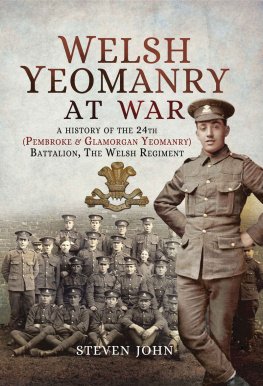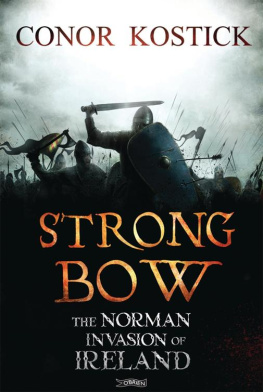
Published by The History Press
Charleston, SC
www.historypress.net
Copyright 2015 by Karen Cross Proctor
All rights reserved
First published 2015
e-book edition 2015
ISBN 978.1.62619.974.3
Library of Congress Control Number: 2015945695
print edition ISBN 978.1.62585.484.1
Notice : The information in this book is true and complete to the best of our knowledge. It is offered without guarantee on the part of the author or The History Press. The author and The History Press disclaim all liability in connection with the use of this book.
All rights reserved. No part of this book may be reproduced or transmitted in any form whatsoever without prior written permission from the publisher except in the case of brief quotations embodied in critical articles and reviews.
CONTENTS
ACKNOWLEDGEMENTS
I would like to thank my husband, John Proctor, for his patience and for sharing his photographic skills in the creation of this book. Thank you to Ed Ledbetter, Mary Ford, Janice Ford and the Pembroke Historical Society for providing many of the images for this book. Finally, thank you to the Pembroke Mariner and the Pembroke Express , two local newspapers, for giving me the opportunity, over twenty years, to research and write these articles and share them with the residents of the town of Pembroke, Massachusetts, a place with a rich history that we all love so much.
INTRODUCTION
The geographic location of the town of Pembroke, Massachusetts, so close to the cradles of American historyPlymouth and Bostonjust naturally seems to indicate that Pembroke would have a rich and illustrious history of its own. From the earliest times when local Native Americans fished in its ponds and hunted in its forests, the area they called Namassakeesett teemed with life-giving food and raw materials that fostered the growth of its native and, later, its European populations.
The Europeans first arrived here in the 1640s as part of a natural expansion of Plimoth Plantation and its environs. They, too, found the abundance of herring and the bounty of natural materials conducive to meeting the needs of their burgeoning population. There were trees for wood and bog iron to create the implements needed to build their homes, not to mention the water power afforded by the North River, Herring and Pudding Brooks and other tributaries to run their mills.
To look at the town on a map today, one would not suspect it had been a cradle of shipbuilding, but in the seventeenth, eighteenth and nineteenth centuries, the North River was home to at least five shipyards on its Pembroke shores, all producing seaworthy vessels. They included Seabury Point, Jobs Landing, Turners Yard, Macys Yard and, perhaps the best known of all of them, the Brick Kiln Yard.
But what truly makes Pembroke unique are its citizens. The town has been the home of industrious Native Americans, brave Patriots, people of great faith and ordinary citizens bent on creating for themselves and their families a comfortable and prosperous place in which to dwell. Either by birth or by choice, Pembroke is blessed with a citizenry that has made and continues to make a difference in the town, in the commonwealth and in the nation.
Part I
NATIVE AMERICANS
PEMBROKE S ROYAL FAMILY
If you are at all familiar with the history of the town of Pembroke, you are aware of the first human inhabitants of our town, the Native Americans. Drawn here partly because of the abundance of herring and other fish in our numerous ponds and waterways, these native people walked, hunted and lived on our lands before the first Europeans made their presence known.
The Massachusetts Native American tribal land extended along the eastern coast of our state and was bounded to the south by the land of the Wampanoags, whose chief, Massasoit, made a treaty with the Pilgrims. The chief of the Massachusetts at that time was Chicataubut, and this tribe numbered about three thousand. A smallpox epidemic around 163133 decimated the tribe, killing the chief and reducing the number of his followers to about three hundred. Chicataubuts son Josiah Wampatuck became the new chief.
While the chiefs home was at Neponset, the tribe seems to have spent much of its time here in what would become Pembroke, and after the death of his father, in about 1647, Wampatuck moved the tribe here permanently. The tribe members settled on a large tract of land around the Pembroke Ponds that is still known to local historians today as the Indian Fields.
Josiah Wampatuck married Westamoo, the widow of Alexander, who was the son of Massasoit. She was known as the Squaw Sachem of Pocasset. Josiah Wampatuck, who made his home on Furnace Pond, was killed by the Mohawk Indians near Fonda, New York, in 1669. Squamok, brother of Josiah and called Daniel by the English, acted as regent during the time that Josiah and Westamoos son Charles Josiah Wampatuck was a minor.

Early map of Pembroke showing the approximate location of the Queen Patience home. Map drawn by Everett Reed .
Charles Josiah Wampatuck died before 1693 and was succeeded by Abigail Wampatuck Momontaug, the sister of Charles Josiah. She was married to Jeremiah Momontaug. Jeremiah died about 1713, and Abigail died about 1717.
Queen Patience, next in line to be head of the tribe, was the daughter of Abigail and Jeremiah and was married twicefirst to Tobias Combs and second to Joseph Peter. Next came Patiences daughter Abigail, then Abigails son Caleb Brand, then his son Caleb Brand, then James Brand, then son James Brand and Josiah Brand.
The late Russell Gardner of Hanson, a descendant of Pembrokes early Native Americans, dedicated much of his life to collecting the true facts and figures pertaining to the legends, folklore and lineage of his ancestors. Based on his research, he put together this lineage of the Massachusetts Native American Royal Family. These names are found throughout the records of the colony of Massachusetts and the town of Pembroke.

Descendant chart of Pembrokes Native American royal family. Based on research by Russell Gardner .
LONG LIVE THE QUEEN !
As most people in Pembroke have come to understand, the Native Americans, so abundant in this area in the years leading up to the twentieth century, have left an indelible mark on our town. Indian Rock, for example, was named because it was an obvious landmark and meeting place for members of local native groups to gather for trade.

Early twentieth-century view of the ancestral home of Queen Patience. From the collection of Ed Leadbetter .
But if you ask most people in Pembroke about Queens Brook, they will direct you to a pleasant road off Center Street. Not everyone is aware of the historic significance of the name. The area was named for a woman of royal Native American ancestry known to those of her time as Queen Patience, or Sunny Eye. The small brook that runs through the area is called Queens Brook because of its proximity to the home of the last queen of Mattakeesett. Although venerated by all who knew her and heir to thousands of acres of land in the Pembroke-Hanson area, when she died in 1788, she did not actually own as much as a foot of land.
















